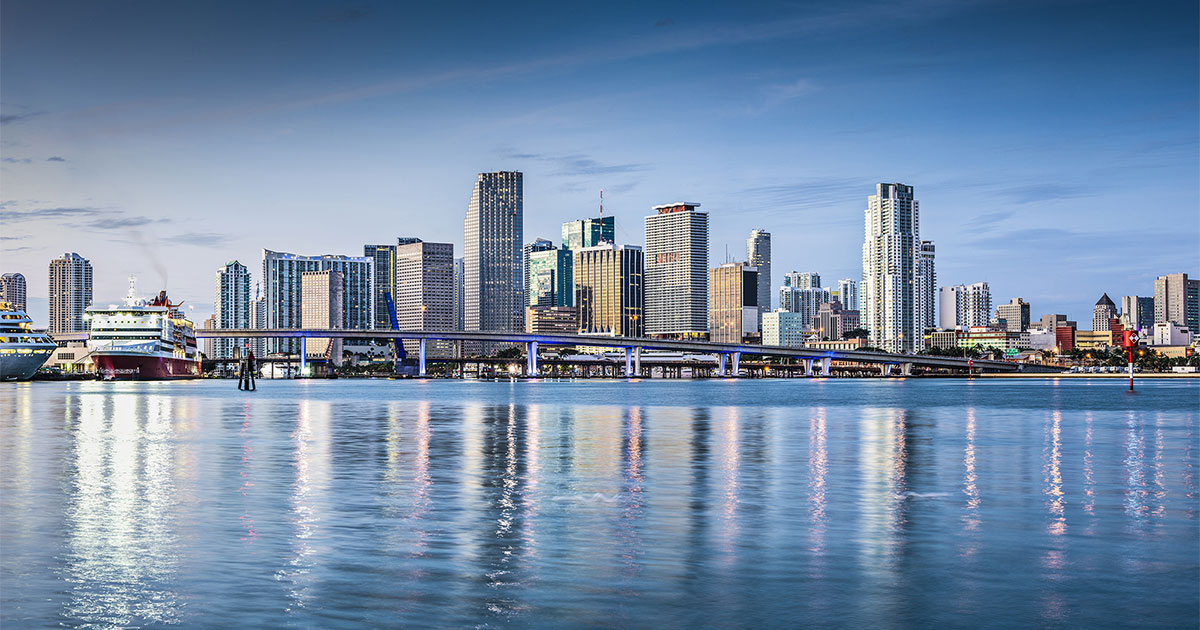What Makes a City Entrepreneurial?

Some cities, such as San Francisco and Boston, have a long history of entrepreneurship. Others, including Miami with its robust startup community, have grown into thriving entrepreneurial cities more recently. What makes each distinct and diverse city such fertile grounds for entrepreneurship?
There’s no one secret to developing a rich entrepreneurial ecosystem. But knowing the traits that make a city entrepreneurial—and having a process for how to get there—can open the door to economic growth and mobility and take a city from surviving to thriving.
A Healthy Ecosystem
“The nature of entrepreneurship can differ widely across cities and this can be influenced, at least in part, by the environment,” says Donna Kelley, Frederic C. Hamilton Professor of Free Enterprise Studies at Babson College.
Kelley is part of the Babson team for the Global Entrepreneurship Monitor (GEM), the largest and most developed research program on entrepreneurship in the world. In one of its surveys, GEM sampled Boston, Detroit, and Miami. The findings pinpointed factors that contribute to each city’s entrepreneurial ecosystem.
In Detroit, the team found negative population growth, lower household income, and high unemployment combined to spark entrepreneurship, particularly among young people ages 18 to 34. The city’s 20 percent entrepreneurship rate (the rate at which citizens are starting or running new businesses) is significantly higher than the 13 percent national average.
“This shows the potential to both attract people, especially young people, to stay in the state, even if employment-based opportunities are declining, and to contribute toward overall employment and lifting the state economy and people’s financial well-being,” Kelley explains.
Compare this to high population growth and no state taxes in Miami, where there’s an even higher entrepreneurship rate (22 percent), but with more mid-career (ages 35 to 54) entrepreneurs. “This demonstrates the city’s ability to create jobs for the growing population, opportunities for those with experience to venture into the startup world, and an expanded global market for their products and services,” notes Kelley.
In Boston, high household income, low unemployment, and high taxes draw older populations toward entrepreneurship. However younger people, attracted by the city’s stable employment opportunities, branch into entrepreneurship once they gain experience and resources.
All three cities demonstrate that a healthy ecosystem is important to entrepreneurial growth, but the factors that provide a foundation for a healthy entrepreneurial ecosystem are quite different. As each city’s ecosystem evolves, the shape entrepreneurship takes will likely evolve with it.
Boosting Entrepreneurship
Peter Cohan, lecturer at Babson and author of Startup Cities, also has identified characteristics that make an area more entrepreneurial. He notes six factors, which he calls a city’s Startup Common: pillar companies, universities, human capital, investment capital, mentor networks, and values.
“The most entrepreneurial cities have developed each of these characteristics in ways that boost the odds of more entrepreneurial success over time,” says Cohan.
For regions looking to increase entrepreneurial activity, Cohan’s Startup Cities explains the success and failure of cities in nurturing startups. These examples become lessons for city leaders on how to boost regional startup activity.
While in theory Cohan believes all cities have the potential to be entrepreneurial, in practice it depends on whether a city can climb what he calls the Pillar Company Staircase.
“The key for a city to become entrepreneurial is to change its values. Such a change happens the first time a local entrepreneur enjoys a successful exit—meaning that she sells her company or takes it public and enriches investors in the process,” explains Cohan. “When that happens, local people decide that it is good for them to encourage more people to start companies. And, if any of those next generation startups are successful, it creates a snowball effect which strengthens the region’s Startup Common and enables the region to climb higher on the Pillar Company Staircase.”
But, not all cities can do this. Accelerators and entrepreneurship-focused schools are great resources, he says, but they don’t make for a complete ecosystem. Cities need a “world-class asset” to attract entrepreneurs. His example: Wenatchee, Washington. The city is “attracting Bitcoin miners from around the world who are using Wenatchee’s very cheap hydroelectric power to power their computers 24/7.”
Scaling Up
Daniel Isenberg, founding executive director of the Babson Entrepreneurship Ecosystem Platform (BEEP), has gone beyond the question of what makes a city entrepreneurial. Instead, he’s asking how. “How do you very quickly change a city whose residents did not see themselves as being entrepreneurial—or think they had the potential—to be entrepreneurial?”
To Isenberg, the Bostons, San Franciscos, and even Miamis of the world are few and far between. Real opportunity lies in midsize cities.
“Midsize cities and their associated regions are where most people live, work, and play, and will continue to do so into the future,” note Isenberg and Vincent Onyemah in Harvard Business Review. “Forecasts tell us that, even in 2050, megacities will still number just a few dozen, while thousands of midsize cities (500,000 to 5 million people) will house 92 percent of the world’s urbanites.”
Isenberg and BEEP have developed and applied a methodology for igniting the entrepreneurial potential in cities such as Milwaukee, Akron, Ohio, and Manizales, Colombia. The process starts by convening the leaders and representatives of leading institutions from broad sectors who may or may not be entrepreneurs themselves. These key individuals need to agree that making their city more growth oriented is beneficial—and they need to decide to get it done.
Next, the group must focus on scaling up. “Growth is normal and can be kick-started in companies that don’t think they are growth companies,” said Isenberg. “These are businesses that already exist—they’ve already passed the market test—and instead of stagnating can grow in months versus years. Many experts are focused on young companies, but we have shown that it is not the age of the venture that defines entrepreneurship, but the value the entrepreneur infuses into the venture.”
This scaling up of businesses can happen more quickly than people think, emphasizes Isenberg. “Hiring more people, winning new contracts, receiving more interest from banks, exporting more goods, paying more taxes, getting more cash flow: These are all indicators of growth.”
These scale-up businesses, in turn, give startups role models, examples, and methodologies to follow. “Growing entrepreneurs can teach other entrepreneurs how to start better,” stresses Isenberg. “Otherwise, you’re starting in a vacuum with an uncertain process.”
One key in all of this scaling up: talking about it. Communicating growth, as he admits, is not natural. BEEP teaches the community to change how hundreds of people communicate about growth. Ultimately, this increases the aspiration levels of other local entrepreneurs.
Next, nonentrepreneurial stakeholders (think bankers, educators, corporations, etc.) need to understand what benefits scaling up provides them. “There are different benefits for the mayor, businesses, media, and schools,” Isenberg expounds. “Universities can achieve their mission of attracting the best students, the town attracts more talent, etc.”
The final step is building this sustainability without experts, like the BEEP team, being involved. “We’re systematically exiting, leaving behind strong institutions that know why and how to invest in growth,” Isenberg explains. “In economic development terms, it’s like a heartbeat.”
While all three experts have different approaches to entrepreneurial cities, what they reveal is there’s no right or wrong environment for entrepreneurship. Rather, any given city has some elements of a healthy entrepreneurial ecosystem—and is missing other elements. It’s the cities that can draw on the resources they do have that position themselves for growth.
Posted in Insights





